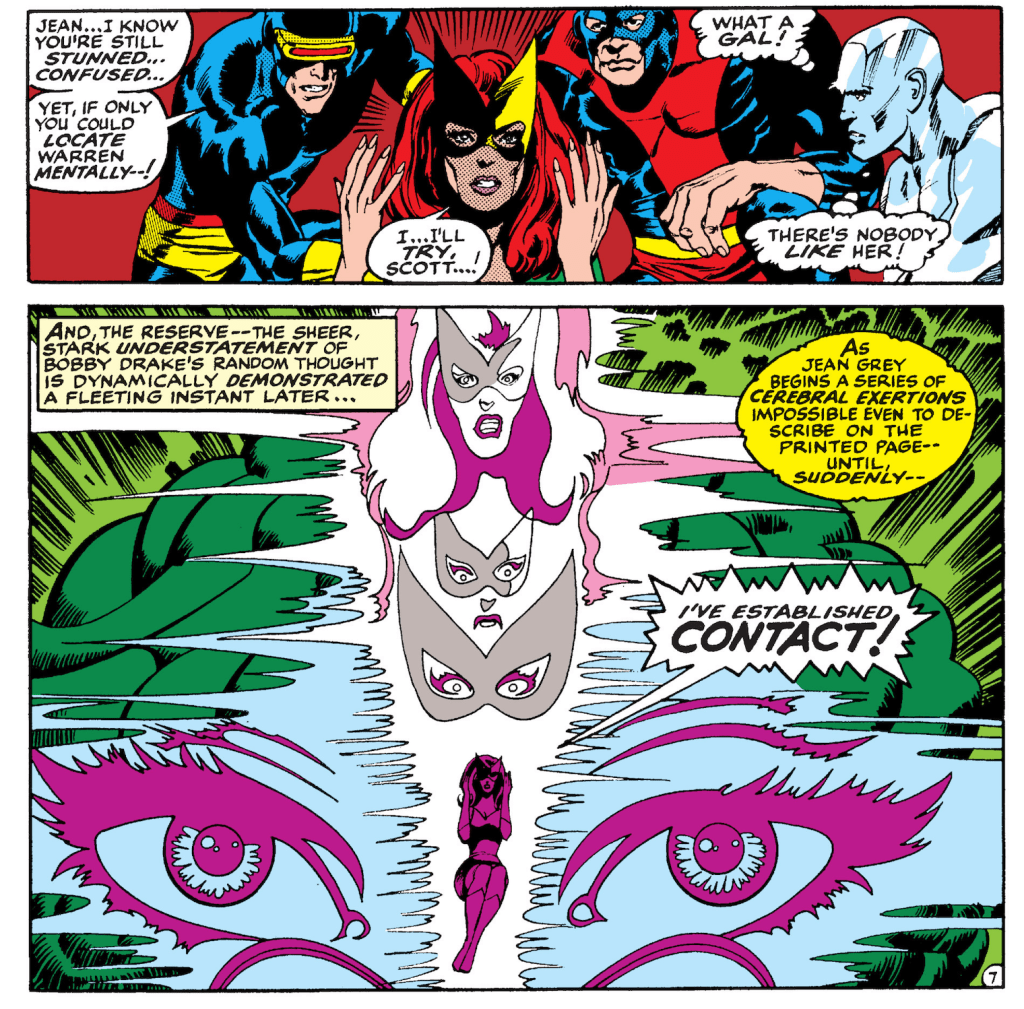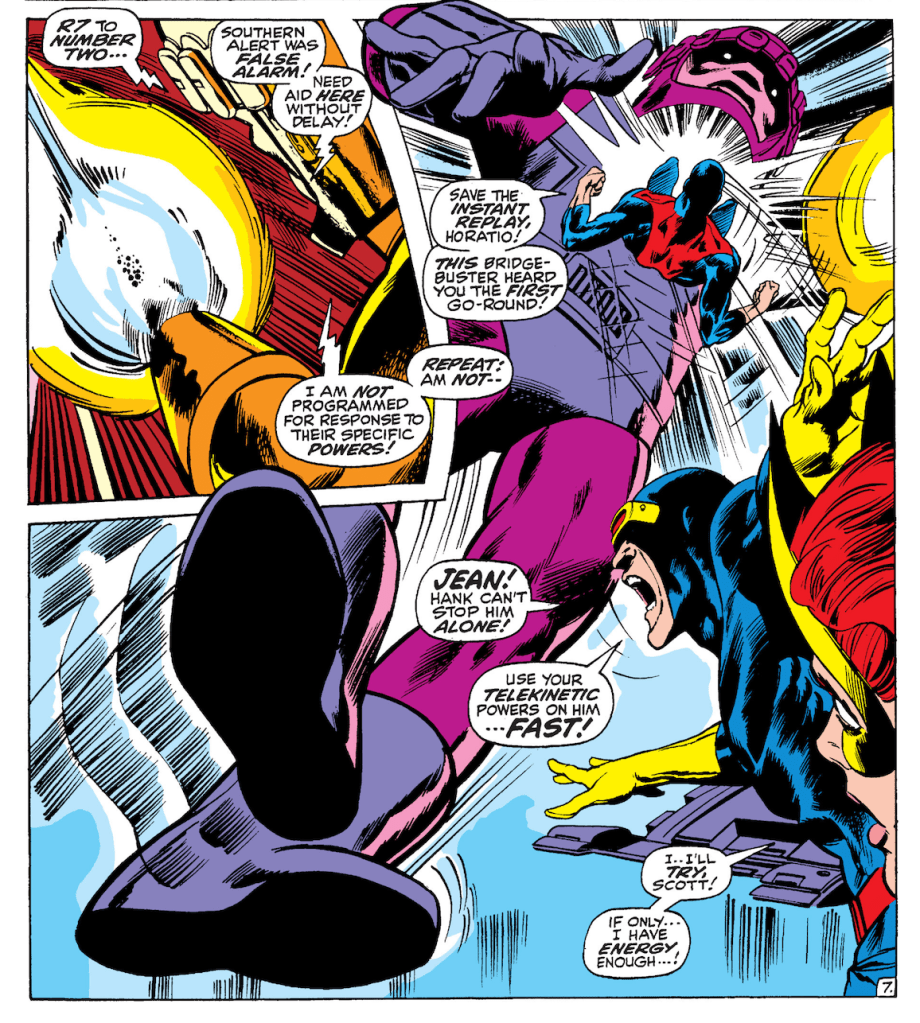I read a lot of comic books as a kid. This series of posts is about the comics I read, and, occasionally, the comics that I should have read.
There it was, taking the caboose position in the credits on the splash page of X-Men #56, cover-dated June 1969, the announcement of an artist’s Marvel Comics debut: “AND INTRODUCING THE PENCILING WIZARDRY OF: NEAL ADAMS.” The House of Ideas was famously prone to excessive hyperbole in their breathless declarations of game-changing developments. If anything, though, wizardry was soft-selling what Adams brought to these pages. An enterprising youth who plunked down a dime and nickel to procure the latest installment of the superhero saga of the strangest teens of all was greeted by a propulsive, dynamic landscape wildly different that rendered of late by sturdy stalwarts Don Heck and Werner Roth. Adams’s visuals practically exploded off the page.
An up-and-comer just starting to draw attention for work with the distinguished competition, Adams had been trying to get his pencil in the door of Marvel for some time. When head honcho Stan Lee finally offered Adams a couple plum freelance gigs, the artist had a counterproposal. Adams reportedly asked which publication was scuffling along with the weakest sales, and Lee responded it was X-Men, adding the title was almost certainly bound for cancellation within the next few months. Adams requested that assignment, figuring he’d be given more leeway to do whatever he wanted.
In his inclination toward being inventive on X-Men, Adams had a simpatico collaborator in writer Roy Thomas. The scribe was also new to the comic, arriving only one issue before Adams. Directing Marvel’s merry mutants was part of Thomas’s swelling portfolio with the publisher, and he was all too happy to cede a good amount of the direction-setting to Adams. Thomas later noted that Adams was effectively the co-plotter on the series, though he wasn’t credited as such. Throughout Adams’s run on the title, it’s excitingly evident that he bends the story to suit his wild imaginings. The reader is the beneficiary.
Adams wasn’t wholly unique in his approach. Elsewhere on the spinner rack, Jim Steranko was similarly blowing up staid panel layouts, and the boldness of expressiveness in his figure rendering has a kinship with both Jack Kirby and John Buscema, the standard bearers of Marvel house style at the time. But Adams truly put it all together like no one else. Every page was an adventure, albeit one led by an expert guide. Like a maestro, Adams continually found ways to make every small moment resonant and every crescendo a burst of joyful, audacious excess.

In The X-Men Companion II, John Byrne, one of Adams’s most famed successors on X-Men, spoke about the artist who was a major influence on him. “I said once to Roger Stern that I figured out what it was that Neal does,” Byrne told interviewer Peter Sanderson. “Neal draws people who look exactly the like people would look if they looked that way….Nobody in the real world looks like a Neal Adams person, but, boy, they sure look real in those pictures.”
Byrne’s comments explains the appeal of Adams as well as anything. Better yet, they explain why Adams was perfectly suited to the medium where he made his fame. Under his hand, the fantastical became believable, the impossible became downright tangible. Ain’t that what the comics are for?
Previous entries in this series (and there are a LOT of them) can be found by clicking on the “My Misspent Youth” tag.
Discover more from Coffee for Two
Subscribe to get the latest posts to your email.


